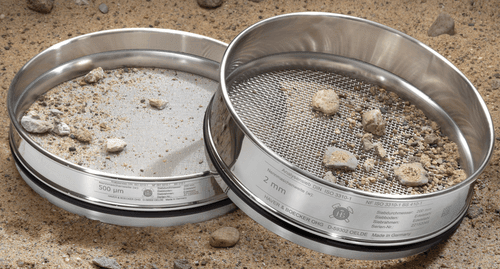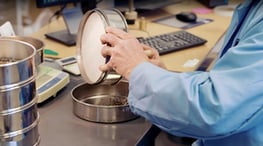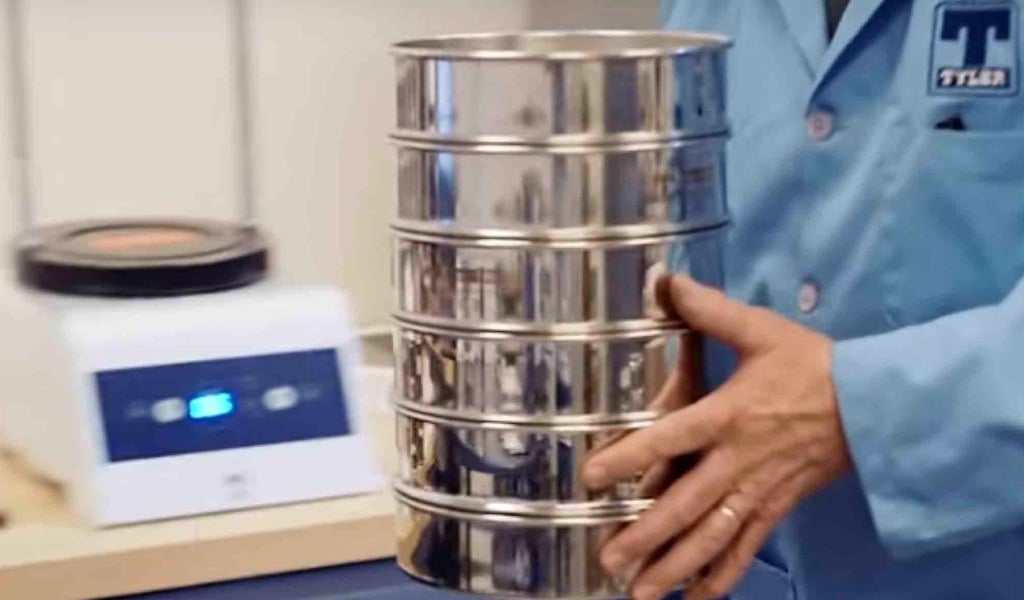What Is Hand Sieving? (Definition and How To)
Particle size analysis is a method used in industries throughout the world that allows manufacturers to test the particle sizes in their products and guarantee a certain quality level. Thanks to today’s modern technology, this is carried out with ease using mechanical sieve shakers, air jet sieves, and dynamic image analyzers.
But these devices aren't always be practical as they may not be readily available, or the accuracy they produce is not required. So what methods work best for lab technicians that find themselves in similar situations?
Well, the answer is hand sieving, as it is the foundation of the particle analysis technology we have today. But what exactly does hand sieving entail?
W.S. Tyler has been regarded as pioneers of the particle analysis industry, and we are here to share our 140 years of experience with you to ensure you have all the knowledge you need to start hand sieving today.
To that end, this article will cover:
- What hand sieving is
- The test sieves you will need
- How to prepare your lab for a hand sieve analysis
- How to perform an accurate hand sieve analysis
- How to collect your analysis results
What Is Hand Sieving?
Hand sieving is a particle size analysis method that has been practiced for nearly as long as humans. From ancient farmers using simple screens to separate grains and seeds to the original gold miners discovering their nuggets, sieving has always been an easy way to separate particles of different sizes.

Hand sieving is a manual process that people can perform to separate particles in a given sample quickly. It is usually performed in the field to get a quick idea of the mix of particles or look for contaminants.
Does Hand Sieving Require Specialized Test Sieves?
Test sieves of any diameter and construction can be used to manually separate particles. As long as the user can easily handle the sieve and there are no tears in the mesh, a 3” sieve to an 18” diameter sieve could be used.
That said, you do want to ensure that the height of the sieves allows you room for your material and tapping. You should also ensure best practices are employed to best maintain your sieves in between testing.
For more information on how to keep your test sieves in tip-top shape, refer to the article: 5 Tips for Maintaining your Test Sieves (Best Practices and Cleaning + Video).
How Do You Prepare for a Hand Sieve Analysis?
Hand Sieving can be performed anywhere with a single test sieve or, less commonly, a small stack of sieves. Prior to conducting a hand sieve analysis, you will want to first ensure the test sieve(s) being used are clean and free of any debris from previous testing.
The next step would be to obtain a representative sample of a manageable size. This process includes ensuring the sample doesn’t cover the surface of the sieve cloth in its entirety. To that end, It is essential to make sure the particles have room to move over the mesh to find the openings.
You should also have a scale, preferably portable for “in the field” work, and something to record your data.
How Do You Perform a Hand Sieve Analysis?
Once your equipment is prepped, and your representative sample is gathered, you can begin testing. Typically, you will use one sieve seated into a collection pan and employ the following steps:
- Pour your sample material onto your sieve surface.
- Rotate the sieve with one hand, gently tapping the side of the frame with the other hand, until most of the finer material has passed through into the pan. This typically takes 1 – 4 minutes to complete. You can either perform this with the sieve level or at an angle, depending on your material.
If you have a stack of sieves that are required for your test, stack them with the coarsest sieve at the top and the finest sieve on the pan. Use the following steps as a guide:
- Rotate and gently tap the sieves for approximately 3 minutes.
- Each sieve should then be processed separately, adding any additional material that passes through to the sieve below it.
- This should be repeated until the finest sieve to the pan.
NOTE: Hand sieving with a stack of sieves is most easily performed by placing the sieve stack on a table.
Less formally, you can choose to hand sieve over a collection bucket, or if retaining the “pass-through” material” isn’t critical, right over the ground if you’re performing the test in the field.
Regardless if you use a single sieve or a sieve stack, consistency is key in hand sieving.
More specifically, the lab technician should try to be as consistent as possible with the tapping and rotation speed. If multiple technicians are performing and managing the hand sieving operation, variating results may be produced.
To combat this, a precise procedure should be written for your lab technicians if hand sieving is your preferred method. That said, there are several mechanical sieve shakers on the market that were designed to allow for more consistent, repeatable results.
How Do You Analyze Your Sample?

Gathering hand sieve analysis results refers to determining the percentage of material that passes through or accumulates on each sieve. Regardless, your results should always add up to your initial representative sample.
For instance, let’s say you’re hand sieving 50 grams of material using a sieve stack. You may have 3 grams of material (6%) on the second sieve and 22 on the third (44%). This would be continued until you reached the collection, at which point you’d subtract the material in the pan from the material in the sieve stack.
For a more in-depth guide on collecting results, refer to our article: How To Collect Sieve Analysis Data (Process, Analyzing, and Tips).
Fine-Tune Your Sieve Analysis Process
Hand sieving is the process of taking a single sieve or sieve stack and manually tapping and rotating it until all the particles have passed through. While not as accurate as other particle analysis methods, it is a quick way to gain a general understanding of the particle quality of a given sample.
But as with any analysis technique, there are several ways in which you can improve the consistency, accuracy, and efficiency of your sieve analysis operation. This includes incorporating and utilizing some of the many test sieve accessories available to you.
Having helped customers navigate the world of particle analysis for over 140 years, W.S. Tyler is here to learn your process and help pinpoint the tools that will take your sieve analysis to greater heights.
To learn everything you need to know about what accessories may be right for your analysis process, read our article: What Test Sieve Analysis Accessories Should You Consider?
About Candace Blaker
Candace is a product manager at W.S. Tyler that oversees all product lines that focus on particle size and characterization. This includes test sieves, lab equipment, computerized particle analysis, and screening media. She also leads the customer service team, assisting with technical questions and customer satisfaction. With 14 years of experience, Candace strives to help customers achieve their goals by eagerly getting to know their process and offering options that can help produce optimal results.




